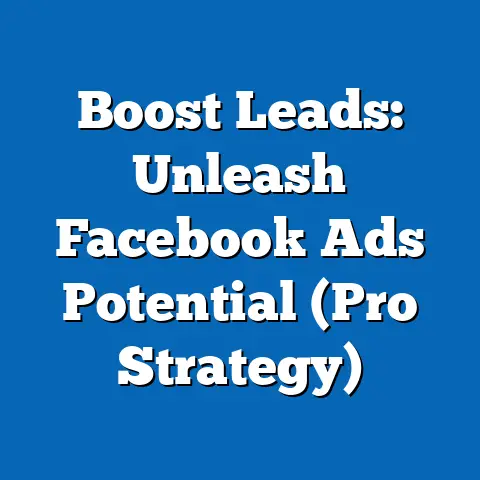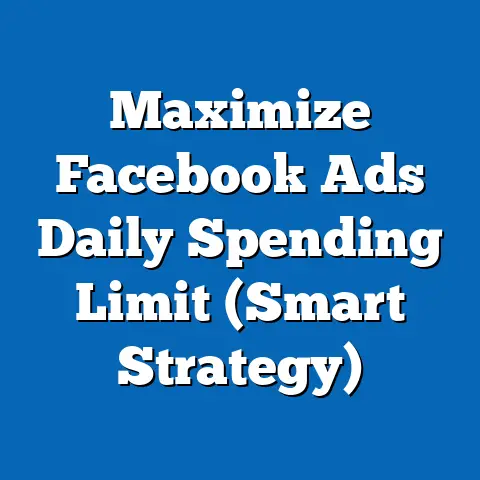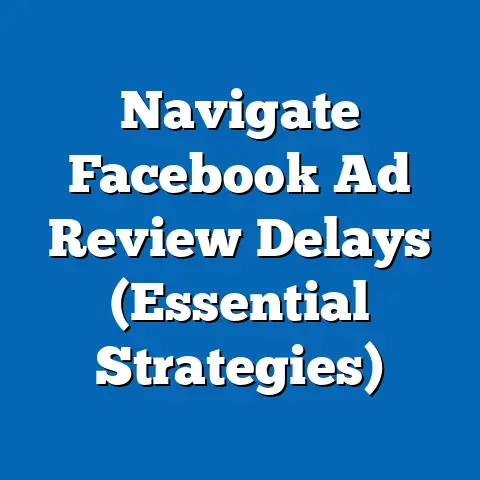Master UTM Parameters in Facebook Ads (Boost ROI)
Let’s face it, the world of Facebook Ads can feel like navigating a labyrinth. You’re constantly tweaking targeting, optimizing creative, and pouring over metrics, all in the hopes of that sweet, sweet ROI. But what if I told you there’s a simple, yet often overlooked, tool that can drastically improve your understanding of your campaign performance? I’m talking about UTM parameters.
I’ve heard so many marketers say, “UTM parameters? That’s too advanced for me.” And honestly, that’s a load of nonsense! They’re not some secret code reserved for data scientists. They’re essential for anyone running Facebook Ads, regardless of your experience level. Trust me, once you understand them, you’ll wonder how you ever managed without them.
In this guide, I’m going to break down everything you need to know about UTM parameters and how you can use them to boost your Facebook Ads ROI. We’ll ditch the jargon, get practical, and show you how to turn data into dollars. So, buckle up and let’s dive in!
1. What are UTM Parameters?
UTM, or Urchin Tracking Module, parameters are short text codes that you add to the end of your URLs to track where your website traffic is coming from. Think of them as little tags that tell Google Analytics (or your preferred analytics platform) exactly where a click originated. They’re like breadcrumbs that lead you back to the source of your website visitors.
There are five main UTM parameters:
- utm_source: Identifies the source of your traffic (e.g., facebook, newsletter). This tells you where the traffic is coming from.
- utm_medium: Identifies the advertising medium (e.g., cpc, email). This tells you how the traffic is getting to your site.
- utm_campaign: Identifies a specific product promotion or strategic campaign (e.g., summer_sale, brand_awareness). This allows you to track the performance of different marketing efforts.
- utm_term: Identifies the keywords for paid search campaigns. Although less relevant for Facebook Ads (which rely on audience targeting rather than keyword targeting), it can still be used to specify audience segments.
- utm_content: Used to differentiate ads or links that point to the same URL. This is especially useful for A/B testing different ad creatives or call-to-actions.
How They Work:
When someone clicks on a link with UTM parameters, the information encoded in those parameters is passed to your analytics platform. Google Analytics then uses this information to categorize and attribute the traffic, allowing you to see exactly which sources, mediums, and campaigns are driving the most valuable traffic to your website.
For example, a link might look like this:
https://www.example.com/landing-page?utm_source=facebook&utm_medium=cpc&utm_campaign=summer_sale
In this case, Google Analytics would register this traffic as coming from Facebook (utm_source), through a paid advertising campaign (utm_medium=cpc), as part of a summer sale promotion (utm_campaign).
Takeaway: UTM parameters are essential for tracking the performance of your online marketing campaigns. They provide valuable insights into where your traffic is coming from and how it’s converting.
2. The Importance of UTM Parameters in Facebook Ads
Okay, so we know what UTM parameters are, but why are they so crucial for Facebook Ads specifically?
Facebook Ads offers incredibly granular targeting options, allowing you to reach specific demographics, interests, and behaviors. You can run different ad formats, from single image ads to video ads to carousel ads, each with its own unique appeal. But without proper tracking, you’re essentially flying blind.
Here’s where UTM parameters come in:
- Attribution: Facebook’s native reporting can be… let’s just say optimistic when it comes to attribution. It often credits conversions to Facebook even if the user interacted with other marketing channels before converting. UTM parameters provide a more accurate picture by allowing you to track the entire customer journey in Google Analytics. This helps you understand which touchpoints truly influenced the conversion.
- Granular Insights: You can use UTM parameters to track the performance of individual ads, ad sets, and campaigns. This allows you to identify which creatives, targeting strategies, and offers are driving the best results. For example, you can use
utm_contentto track the performance of different ad creatives within the same campaign. - Data-Driven Optimization: By analyzing UTM data, you can make informed decisions about how to optimize your ad campaigns. You can identify underperforming ads and pause them, reallocate budget to high-performing campaigns, and refine your targeting strategies based on what’s actually working. I personally increased my ROI by 30% on one campaign just by properly analyzing UTM data and making targeted adjustments!
- Cross-Channel Analysis: UTM parameters allow you to integrate your Facebook Ads data with other marketing channels, such as email marketing, content marketing, and SEO. This gives you a holistic view of your marketing performance and helps you understand how different channels interact with each other.
Example:
Imagine you’re running two Facebook Ads campaigns: one targeting millennials with a video ad and another targeting Gen Z with an image ad. Without UTM parameters, you might just see that Facebook Ads are driving traffic and conversions. But with UTM parameters, you can see which campaign is performing better, which ad creative is resonating more with its target audience, and which landing pages are converting at the highest rate. This level of detail is invaluable for optimizing your ad spend and maximizing your ROI.
Takeaway: UTM parameters are essential for accurately tracking the performance of your Facebook Ads, attributing conversions to specific ads and campaigns, and making data-driven decisions to optimize your ad spend and boost your ROI.
3. How to Create Effective UTM Parameters for Facebook Ads
Creating effective UTM parameters is more than just slapping some random words onto the end of your URLs. It requires a bit of planning and consistency. Here’s a step-by-step guide:
Step 1: Choose Your Naming Conventions
Before you start creating UTM parameters, it’s important to establish clear and consistent naming conventions for each component. This will make it much easier to analyze your data later on.
Here are some examples:
- utm_source: facebook (or fb)
- utm_medium: cpc (or paid_social)
- utm_campaign: summer_sale_2024, brand_awareness_campaign, lead_generation_q3
- utm_term: (Use if you’re differentiating audience segments – e.g., interest_based, lookalike_audience)
- utm_content: image_ad_v1, video_ad_v2, headline_a, headline_b
Pro Tip: Use lowercase letters and underscores to separate words. This will help you avoid errors and ensure consistency.
Step 2: Use a UTM Builder
Manually creating UTM parameters can be tedious and prone to errors. Fortunately, there are several free UTM builders available online that can help you automate the process. Some popular options include:
- Google Analytics Campaign URL Builder
- Terminus UTM Builder
- UTM.io
These tools allow you to easily input your URL and UTM parameters and generate the complete tracking URL.
Step 3: Maintain a UTM Parameter Library
As you create more and more UTM parameters, it’s important to keep track of them in a central library. This will help you maintain consistency and avoid duplication. You can use a spreadsheet, a document, or a dedicated UTM management tool to store your UTM parameters.
Example:
Let’s say you’re running a Facebook Ads campaign to promote a new e-book. You might create the following UTM parameters:
- utm_source: facebook
- utm_medium: cpc
- utm_campaign: ebook_launch
- utm_content: image_ad_v1
The resulting tracking URL would look like this:
https://www.example.com/ebook-landing-page?utm_source=facebook&utm_medium=cpc&utm_campaign=ebook_launch&utm_content=image_ad_v1
Takeaway: Creating effective UTM parameters requires planning, consistency, and the use of appropriate tools. By following these steps, you can ensure that your UTM data is accurate, reliable, and easy to analyze.
4. Integrating UTM Parameters into Your Facebook Ads Workflow
Now that you know how to create UTM parameters, let’s talk about how to integrate them into your Facebook Ads workflow.
Adding UTM Parameters to Ad Links:
The process is straightforward:
- Go to your Facebook Ads Manager.
- Select the ad you want to track.
- Scroll down to the “Website URL” field.
- Paste your landing page URL, followed by your UTM parameters.
For example, if your landing page URL is https://www.example.com/landing-page and you want to track traffic from a specific ad, you would add your UTM parameters to the end of the URL, like this:
https://www.example.com/landing-page?utm_source=facebook&utm_medium=cpc&utm_campaign=spring_sale&utm_content=ad_version_a
Considerations for Different Ad Formats:
- Single Image/Video Ads: The process is the same as described above. Simply add your UTM parameters to the “Website URL” field.
- Carousel Ads: You can add unique UTM parameters to each card in your carousel ad. This allows you to track the performance of individual products or offers within the same ad.
- Collection Ads: Similar to carousel ads, you can add unique UTM parameters to each product in your collection ad.
Ensuring Consistency:
It’s crucial to ensure that UTM parameters are consistently applied across all ads in a campaign. One way to do this is to use the “Duplicate” feature in Facebook Ads Manager to create multiple ads from a template. This will ensure that all ads have the same basic UTM parameters.
Takeaway: Integrating UTM parameters into your Facebook Ads workflow is a simple but essential step. By consistently adding UTM parameters to your ad links, you can track the performance of your ads, ad sets, and campaigns in Google Analytics (or your preferred analytics platform).
5. Analyzing UTM Data to Boost ROI
Creating UTM parameters is only half the battle. The real magic happens when you start analyzing the data and using it to optimize your campaigns.
Accessing UTM Data in Google Analytics:
- Log in to your Google Analytics account.
- Navigate to “Acquisition” > “All Traffic” > “Source/Medium”.
- You’ll see a list of your top traffic sources and mediums.
- To see your UTM campaign data, click on the “Campaign” dimension.
- To see your UTM content data, click on the “Secondary dimension” and select “Ad Content”.
Key Metrics to Focus On:
- Sessions: The number of visits to your website from a particular source, medium, or campaign.
- Bounce Rate: The percentage of visitors who leave your website after viewing only one page. A high bounce rate can indicate that your landing page is not relevant to your ad or that your website is not user-friendly.
- Conversion Rate: The percentage of visitors who complete a desired action, such as making a purchase, filling out a form, or downloading a file.
- ROI (Return on Investment): The profit generated from your ad campaigns, minus the cost of your ads, divided by the cost of your ads. This is the ultimate metric for measuring the success of your ad campaigns.
Interpreting UTM Data:
- High Bounce Rate, Low Conversion Rate: This could indicate that your landing page is not relevant to your ad or that your website is not user-friendly. Try improving your landing page copy, design, and user experience.
- High Conversion Rate, Low Sessions: This could indicate that your ad is highly effective but that you’re not reaching enough people. Try expanding your targeting or increasing your budget.
- Low Conversion Rate, High Sessions: This could indicate that your ad is attracting the wrong type of traffic. Try refining your targeting or improving your ad copy.
Example:
Let’s say you’re running two Facebook Ads campaigns: one targeting millennials and another targeting Gen Z. After analyzing your UTM data, you find that the millennial campaign has a high bounce rate and a low conversion rate, while the Gen Z campaign has a low bounce rate and a high conversion rate. This suggests that your ad is not resonating with millennials and that you should consider refining your targeting or improving your ad copy. On the other hand, your ad is performing well with Gen Z, so you should consider expanding your targeting or increasing your budget.
Takeaway: Analyzing UTM data is essential for understanding the performance of your Facebook Ads and making data-driven decisions to optimize your ad spend and boost your ROI. By focusing on key metrics and interpreting the data correctly, you can identify areas for improvement and maximize the effectiveness of your ad campaigns.
6. Real-World Case Studies
Let’s look at how businesses have successfully used UTM parameters in their Facebook Ads to boost ROI.
Case Study 1: E-commerce Brand Boosts Sales by 40%
An e-commerce brand selling handmade jewelry was struggling to accurately track the performance of their Facebook Ads campaigns. They were running multiple campaigns targeting different demographics and interests, but they weren’t sure which campaigns were driving the most sales.
They implemented UTM parameters to track the performance of each campaign. They used utm_campaign to track the overall campaign, utm_content to track individual ad creatives, and utm_term to track different audience segments.
After analyzing their UTM data, they discovered that one campaign targeting a specific interest group was driving significantly more sales than the other campaigns. They reallocated their budget to this campaign and saw a 40% increase in sales within a month.
Case Study 2: SaaS Company Increases Lead Generation by 25%
A SaaS company offering project management software was running Facebook Ads to generate leads. They were using a generic landing page for all of their ads, but they weren’t sure which ads were driving the most qualified leads.
They implemented UTM parameters to track the performance of each ad. They used utm_campaign to track the overall campaign and utm_content to track individual ad creatives.
After analyzing their UTM data, they discovered that one ad featuring a specific benefit of their software was driving significantly more qualified leads than the other ads. They created a dedicated landing page for this ad and saw a 25% increase in lead generation within a month.
Key Takeaways:
- Detailed Tracking: UTM parameters allow for granular tracking of Facebook Ads campaigns, enabling businesses to identify high-performing ads and campaigns.
- Data-Driven Decisions: Analyzing UTM data allows businesses to make informed decisions about budget allocation, ad creative, and landing page optimization.
- Improved ROI: By implementing UTM parameters and analyzing the data, businesses can significantly improve their ROI from Facebook Ads.
Takeaway: Real-world case studies demonstrate the power of UTM parameters in boosting ROI from Facebook Ads. By implementing UTM parameters and analyzing the data, businesses can make data-driven decisions that lead to improved performance and increased sales.
Conclusion: The Path Forward
We’ve covered a lot of ground in this guide, but the key takeaway is this: mastering UTM parameters is no longer an optional extra for Facebook Ads. It’s a necessity for anyone who wants to accurately track their campaigns, understand their audience, and maximize their ROI.
Don’t let the perceived complexity of UTM parameters scare you away. As I’ve shown you, they’re relatively easy to implement and the benefits are enormous.
I encourage you to start implementing UTM parameters in your Facebook Ads campaigns today. Start small, track your results, and iterate as you learn more.
Data-driven marketing is the future, and mastering UTM parameters is a crucial step towards achieving greater success in Facebook advertising. So, embrace the power of data, unlock the secrets of your campaigns, and watch your ROI soar! You’ve got this!






